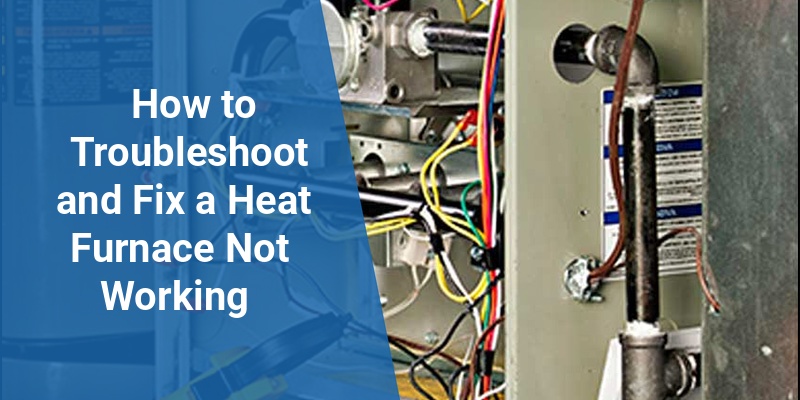A heat furnace plays a crucial role in maintaining warmth and comfort in American homes during colder months. When a heat furnace is not working, it can lead to discomfort and potential safety issues. This article provides detailed troubleshooting steps, common causes, and repair tips to help homeowners understand and resolve furnace problems efficiently. Whether the furnace fails to ignite, makes unusual noises, or shuts down unexpectedly, knowing how to approach these issues is essential for timely and safe furnace operation.
| Common Furnace Issues | Possible Causes | Recommended Actions |
|---|---|---|
| Furnace Won’t Turn On | Thermostat settings, power supply, blown fuse | Check thermostat, reset breaker, replace fuse |
| No Heat or Insufficient Heat | Dirty filters, pilot light out, faulty ignition | Replace filters, relight pilot, inspect ignition system |
| Furnace Shuts Off Suddenly | Overheating, blocked vents, faulty limit switch | Clear vents, clean blower, test limit switch |
| Unusual Noises | Loose parts, motor issues, debris in blower | Tighten parts, inspect motor, clear debris |
Common Reasons Why a Heat Furnace Stops Working
Power Supply Problems are a frequent cause of furnace failures. If the furnace does not receive adequate electricity, it will not operate. This may result from tripped circuit breakers, blown fuses, or disconnected power switches.
Thermostat Issues also impact furnace operation. Incorrect thermostat settings or defective components can prevent the furnace from turning on or responding properly.
Dirty or Clogged Air Filters restrict airflow, causing the furnace to overheat and shut off as a safety measure. Regular filter maintenance is essential for proper furnace function.
Ignition or Pilot Light Problems prevent the furnace from producing heat. A pilot light that goes out or an electronic ignition failure must be addressed quickly.
Blocked or Closed Vents and Ducts reduce airflow, causing the furnace to malfunction or cycle off. Ensuring all vents are open and unobstructed is critical.
Malfunctioning Components such as limit switches, flame sensors, or the blower motor can cause the furnace to behave erratically or stop working.
Call 888-906-9139 for Free Local HVAC Quotes – No Obligation, Just Savings!
Step-by-Step Troubleshooting for a Furnace That Won’t Start
Start by checking the thermostat settings. Ensure it is set to “heat” mode and the temperature setting is higher than the current room temperature.
Verify the furnace’s power supply. Check the electrical panel for tripped circuit breakers or blown fuses and reset or replace them as necessary.
Inspect the ignition system. For furnaces with a pilot light, confirm it is lit. For electronic ignitions, listen for clicking sounds or consult the furnace manual for diagnostic indicator lights.
Check the furnace air filters. Dirty or clogged filters reduce airflow and prevent ignition. Replace filters regularly, typically every 1-3 months depending on usage.
Inspect the gas supply line if your furnace uses natural gas or propane. Ensure gas valves are fully open and that there are no leaks or interruptions in service.
How to Address Common Furnace Issues
Furnace Not Heating Properly
Replace or clean air filters to restore airflow. If the pilot light is out, follow manufacturer instructions to safely relight it. For electronic ignition failures, consulting a professional may be necessary.
Furnace Shuts Off Suddenly
Overheating due to blocked vents or a dirty blower motor often causes abrupt shutdowns. Ensure vents are open and clean the blower motor. Testing the limit switch and replacing if faulty can resolve persistent shutdowns.
Call 888-906-9139 for Free Local HVAC Quotes – No Obligation, Just Savings!
Unusual Noises from the Furnace
Rattling or banging can indicate loose parts, while squealing noises often point to motor belt issues. Inspect and tighten components or replace worn belts to eliminate noises.
Maintenance Tips to Prevent Furnace Breakdown
- Regular Filter Replacement: Change air filters at least every 1-3 months to ensure proper airflow and filter dust and allergens.
- Annual Professional Inspection: Schedule yearly maintenance with a licensed HVAC technician to inspect, clean, and tune up the furnace system.
- Keep Area Around Furnace Clear: Remove debris and ensure proper ventilation around the furnace to prevent overheating and fire hazards.
- Inspect and Clean Vents and Ducts: Blocked or dirty ducts decrease efficiency and can cause overheating; clean as recommended.
- Monitor Thermostat Operation: Replace batteries and test the thermostat regularly to ensure accurate temperature control.
When to Call a Professional HVAC Technician
Complex Electrical Issues: If resetting breakers or fuses does not restore power to the furnace, professional diagnosis is necessary to avoid electrical hazards.
Gas Smell or Suspected Leak: Immediately shut off the gas supply and contact a professional to inspect. Do not attempt repairs yourself.
Persistent Ignition Failures: When pilot lights repeatedly go out or electronic ignition fails, a technician can perform detailed diagnostics and repairs.
Major Component Failures: Problems with the blower motor, limit switch, or heat exchanger require expert handling to maintain safety and furnace efficiency.
Safety Precautions When Handling Furnace Problems
- Always turn off power and gas supply before inspecting the furnace.
- Do not attempt to fix gas leaks or major electrical issues; contact licensed professionals.
- Maintain clear ventilation around the furnace to avoid carbon monoxide buildup.
- Install carbon monoxide detectors near furnace areas for early leak detection.
- Follow manufacturer instructions carefully when lighting pilot lights or replacing furnace components.
